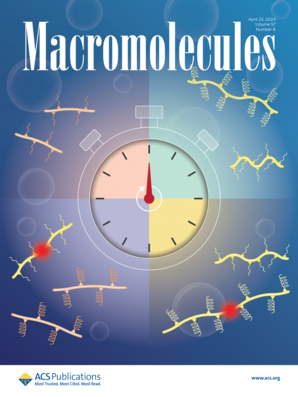Manipulating the Mechanical Properties of Thermoplastic Polyurethane via Regulating Hard Segment Aggregation
IF 5.1
1区 化学
Q1 POLYMER SCIENCE
引用次数: 0
Abstract
Performance optimization of thermoplastic polyurethane (TPU) is hindered by the mysterious structure–property relationship due to intricate hard segment (HS) aggregation structures. Here, a typical MDI-BDO-based TPU was employed as a model to investigate the HS aggregation structures from multiscale morphology, and different annealing conditions were applied to transform them to effectively manipulate TPU’s mechanical properties. The pristine TPU has three HS aggregation structures. Structure I is hard domains with irregularly stacked hard blocks and disordered HS packing, while structures II and III are crystalline hard domains with loosely and compactly stacked hard blocks, respectively. Therefore, the reduced moduli (Er) of structures II and III are 19 and 57% higher than that of structure I, respectively. Annealing at 170 °C enlarged structure I but decreased its number density, slightly lowering TPU’s modulus to 108.0 from 110.8 MPa. Annealing at 200 and 220 °C reorganized less ordered HSs into crystalline structures II and III, respectively, which significantly enhanced TPU’s modulus to 141.8 and 187.1 MPa, respectively. For viscoelasticity, TPU’s stress relaxation resistance decreased with annealing temperature because 170, 200, and 220 °C very slightly, partly, and completely broke the hard domain’s long-range connectivity, respectively. This work elucidated the evolution of HS aggregation structures during annealing, which provides guidelines for TPU’s performance optimization and design.

通过调节硬段聚集来调控热塑性聚氨酯的力学性能
热塑性聚氨酯(TPU)由于其复杂的硬段(HS)聚集结构而形成的神秘的结构-性能关系阻碍了其性能的优化。本文以典型的mdi - bdo基TPU为模型,从多尺度形貌研究了HS聚集结构,并采用不同的退火条件对其进行了转化,从而有效地控制了TPU的力学性能。原始TPU具有三种HS聚合结构。结构I为硬块无序堆积的硬畴,结构II和结构III为硬块松散堆积的结晶硬畴,结构III为硬块紧密堆积的结晶硬畴。因此,结构II和III的还原模量(Er)分别比结构I高19%和57%。170℃退火增大了I型结构,但降低了其数字密度,使TPU的模量从110.8 MPa略微降低到108.0。在200°C和220°C退火时,无序的HSs分别重组为II和III型晶体结构,TPU的模量分别显著提高到141.8和187.1 MPa。在粘弹性方面,TPU的抗应力松弛性随退火温度的升高而降低,因为170℃、200℃和220℃分别非常轻微、部分和完全破坏了硬畴的远程连通性。这项工作阐明了HS在退火过程中聚集结构的演变,为TPU的性能优化和设计提供了指导。
本文章由计算机程序翻译,如有差异,请以英文原文为准。
求助全文
约1分钟内获得全文
求助全文
来源期刊

Macromolecules
工程技术-高分子科学
CiteScore
9.30
自引率
16.40%
发文量
942
审稿时长
2 months
期刊介绍:
Macromolecules publishes original, fundamental, and impactful research on all aspects of polymer science. Topics of interest include synthesis (e.g., controlled polymerizations, polymerization catalysis, post polymerization modification, new monomer structures and polymer architectures, and polymerization mechanisms/kinetics analysis); phase behavior, thermodynamics, dynamic, and ordering/disordering phenomena (e.g., self-assembly, gelation, crystallization, solution/melt/solid-state characteristics); structure and properties (e.g., mechanical and rheological properties, surface/interfacial characteristics, electronic and transport properties); new state of the art characterization (e.g., spectroscopy, scattering, microscopy, rheology), simulation (e.g., Monte Carlo, molecular dynamics, multi-scale/coarse-grained modeling), and theoretical methods. Renewable/sustainable polymers, polymer networks, responsive polymers, electro-, magneto- and opto-active macromolecules, inorganic polymers, charge-transporting polymers (ion-containing, semiconducting, and conducting), nanostructured polymers, and polymer composites are also of interest. Typical papers published in Macromolecules showcase important and innovative concepts, experimental methods/observations, and theoretical/computational approaches that demonstrate a fundamental advance in the understanding of polymers.
 求助内容:
求助内容: 应助结果提醒方式:
应助结果提醒方式:


